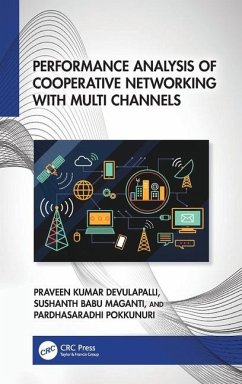
Multicast Algorithms for Mobile Satellite Communication Networks
Versandkostenfrei!
Versandfertig in über 4 Wochen
28,99 €
inkl. MwSt.
Weitere Ausgaben:

PAYBACK Punkte
14 °P sammeln!
With the rise of mobile computing and an increasing need for ubiquitous high speed data connections, Internet-in-the-sky solutions are becoming increasingly viable. To reduce the network overhead of one-to-many transmissions, the multicast protocol has been devised. The implementation of multicast in these Low Earth Orbit (LEO) constellations is a critical component to achieving an omnipresent network environment. This research examines the system performance associated with two terrestrial-based multicast mobility solutions, Distance Vector Multicast Routing Protocol (DVMRP) with mobile IP an...
With the rise of mobile computing and an increasing need for ubiquitous high speed data connections, Internet-in-the-sky solutions are becoming increasingly viable. To reduce the network overhead of one-to-many transmissions, the multicast protocol has been devised. The implementation of multicast in these Low Earth Orbit (LEO) constellations is a critical component to achieving an omnipresent network environment. This research examines the system performance associated with two terrestrial-based multicast mobility solutions, Distance Vector Multicast Routing Protocol (DVMRP) with mobile IP and On Demand Multicast Routing Protocol (ODMRP). These protocols are implemented and simulated in a six plane, 66 satellite LEO constellation. Each protocol was subjected to various workload, to include changes in the number of source nodes and the amount of traffic generated by these nodes. Results from the simulation trials show the ODMRP protocol provided greater than 99% reliability in packet deliverability, at the cost of more than 8 bits of overhead for every 1 bit of data for multicast groups with multiple sources. In contrast, DVMRP proved robust and scalable, with data-to-overhead ratios increasing logarithmically with membership levels. DVMRP also had less than 70 ms of average end- to-end delay, providing stable transmissions at high loading and membership levels. Due to the fact that system performance metric values varied as a function of protocol, system design objectives must be considered when choosing a protocol for implementation. This work has been selected by scholars as being culturally important, and is part of the knowledge base of civilization as we know it. This work was reproduced from the original artifact, and remains as true to the original work as possible. Therefore, you will see the original copyright references, library stamps (as most of these works have been housed in our most important libraries around the world), and other notations in the work. This work is in the public domain in the United States of America, and possibly other nations. Within the United States, you may freely copy and distribute this work, as no entity (individual or corporate) has a copyright on the body of the work. As a reproduction of a historical artifact, this work may contain missing or blurred pages, poor pictures, errant marks, etc. Scholars believe, and we concur, that this work is important enough to be preserved, reproduced, and made generally available to the public. We appreciate your support of the preservation process, and thank you for being an important part of keeping this knowledge alive and relevant.












